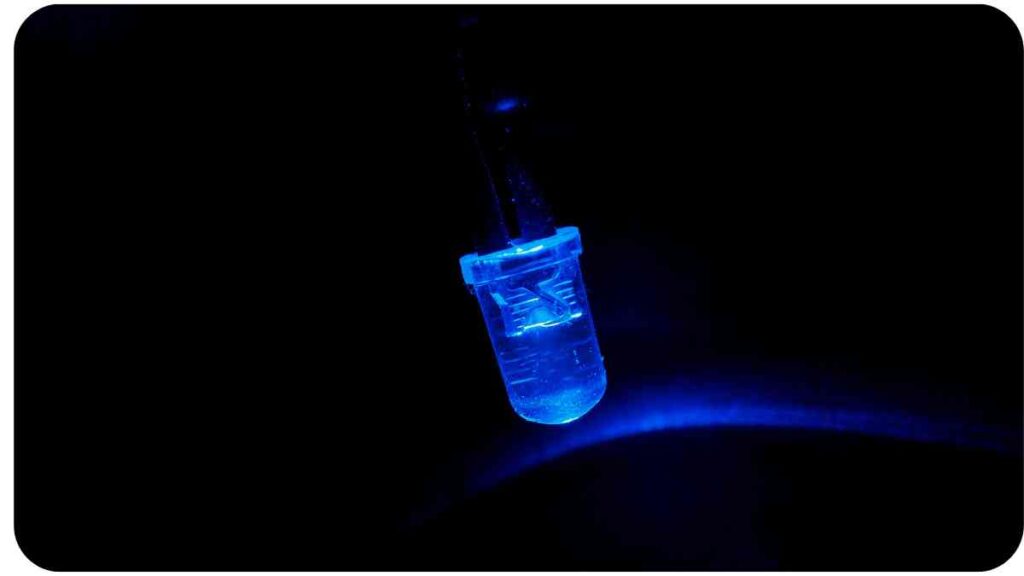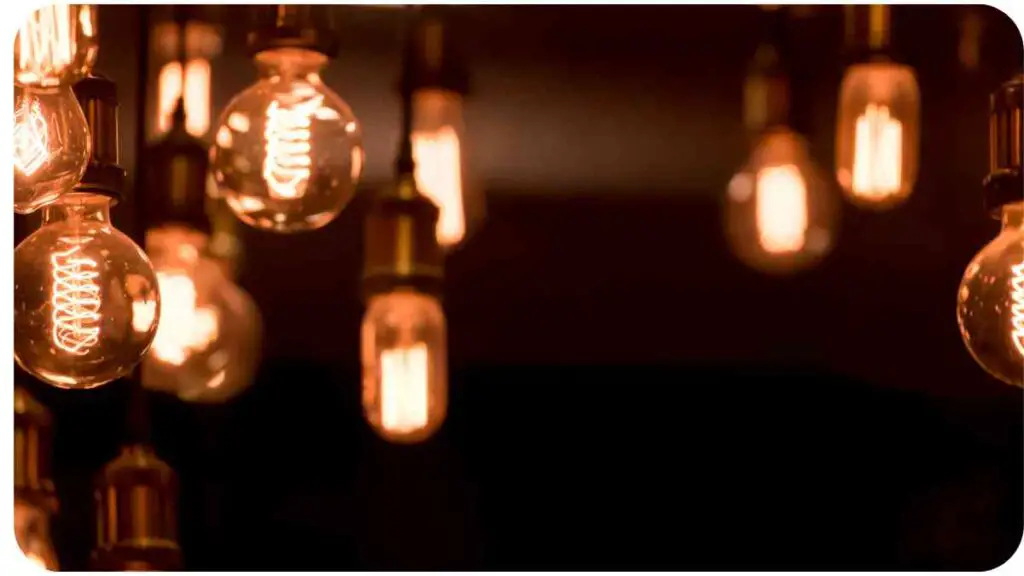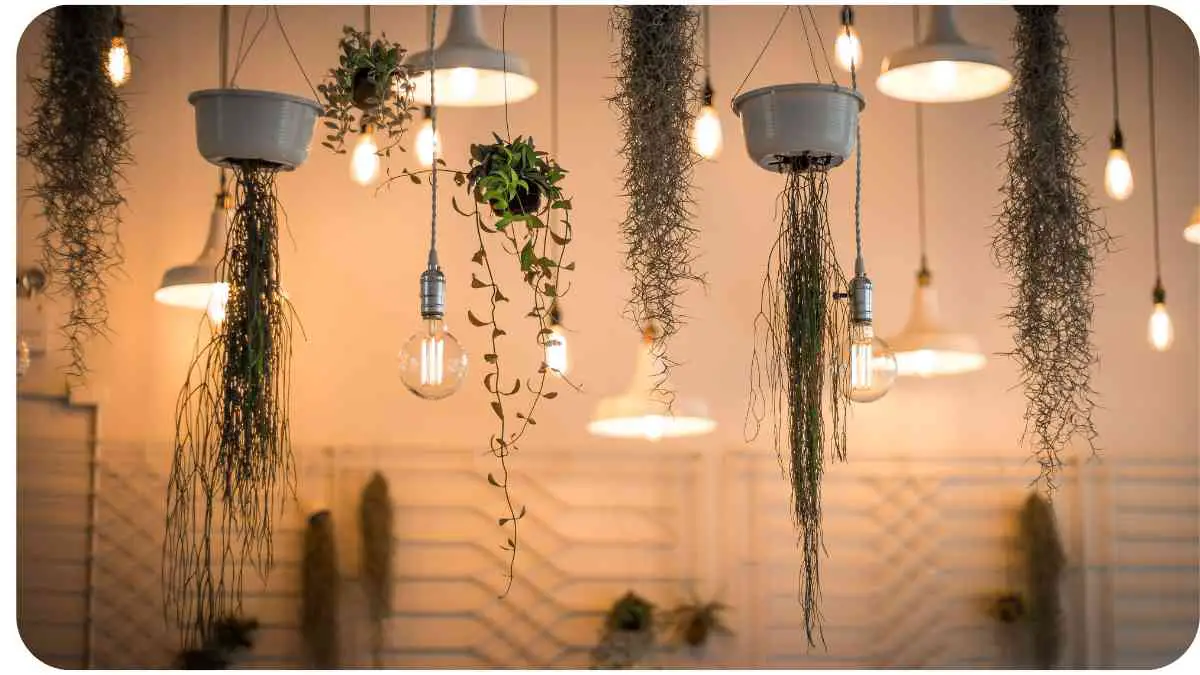Outdoor lighting can transform your property into a magical and secure haven, but what happens when those lights start to flicker? It’s not only annoying but can also indicate underlying issues that need attention.
In this comprehensive guide, we’ll delve into the common reasons behind flickering outdoor lights, troubleshooting steps, expert tips, and more. As a seasoned landscape lighting specialist, I’ll share my insights and experiences to help you enjoy uninterrupted outdoor illumination.
| Key Points |
| Address flickering outdoor lights promptly to ensure reliability. |
| Regular maintenance can extend the lifespan of your lighting. |
| Choose high-quality fixtures and bulbs for durability. |
| Professional installation may be necessary for complex issues. |
| Energy-efficient lighting options reduce costs and environmental impact. |
Common Causes of Outdoor Light Flickering
2.1. Loose Bulbs
One of the most frequent culprits of flickering outdoor lights is loose bulbs. When bulbs aren’t securely screwed in, they can intermittently lose contact with the fixture. This can be due to vibrations from nearby traffic, wind, or even critters.
Enhance your landscape’s beauty with expert landscape lighting tips. Discover creative ways to illuminate your outdoor space.
2.2. Faulty Wiring
Faulty wiring can be a significant headache when it comes to outdoor lighting. Over time, exposure to the elements can degrade wiring insulation, leading to shorts or loose connections. This can manifest as flickering lights or even complete outages.
2.3. Voltage Fluctuations
Voltage fluctuations are more common than you might think. They can occur due to various reasons, including power grid issues and appliances drawing power simultaneously. When voltage levels drop, your lights may flicker as they struggle to maintain consistent brightness.
2.4. Weather and Environmental Factors
Mother Nature can wreak havoc on your outdoor lighting. Rain, snow, and extreme temperatures can affect the electrical components and connections, causing flickering. Additionally, pests and insects may nest in fixtures, further disrupting your lighting system.
Transform your outdoor haven with these landscape lighting ideas. Make the most of your outdoor living space at night.
Troubleshooting Flickering Lights

3.1. DIY Checks
3.1.1. Inspect Bulbs
If you’ve noticed flickering lights, start with a simple inspection. Ensure all bulbs are screwed in tightly. Replace any damaged or burnt-out bulbs immediately. Sometimes, the solution can be as easy as a quick bulb swap.
3.1.2. Examine Wiring
Carefully examine the wiring for any visible damage or loose connections. If you spot issues, consider rewiring or repairing the affected sections. Remember to turn off the power supply before attempting any electrical work.
Learn how to set up professional-grade landscape lighting with our step-by-step guide. Illuminate your landscape like a pro.
3.2. Professional Assessment
If DIY checks don’t resolve the issue or if you’re uncomfortable with electrical troubleshooting, it’s wise to seek professional assistance. An experienced electrician can identify and rectify complex wiring problems and ensure your outdoor lighting is safe and reliable.
| Issue | DIY Fix | Professional Help |
| Loose Bulbs | Tighten or replace bulbs | – |
| Faulty Wiring | Inspect and repair | Complete rewiring |
| Voltage Fluctuations | – | Voltage stabilization |
| Environmental Factors | Weatherproofing | Pest removal and repairs |
Solutions to Prevent Flickering Lights

4.1. Stabilizing Voltage
To combat voltage fluctuations, consider installing voltage stabilizers. These devices ensure a consistent power supply to your outdoor lights, reducing the chances of flickering.
4.2. Quality Fixtures and Bulbs
Investing in high-quality fixtures and bulbs can make a significant difference. They are more durable and less prone to flickering due to weather or wear and tear.
4.3. Weatherproofing
Protect your lighting system from the elements by weatherproofing all components. Seal connections, use waterproof enclosures, and choose fixtures designed to withstand outdoor conditions.
4.4. Timer Controls
Consider installing timer controls for your outdoor lights. Timers can regulate when your lights turn on and off, reducing the strain on your system and minimizing flickering caused by abrupt power changes.
Choose the perfect lighting for your home with these landscape lighting tips. Light up your outdoor space effectively and beautifully
4.5. Smart Lighting Options
Embrace smart lighting technology to enhance your outdoor lighting experience. Smart systems allow you to control your lights remotely, schedule lighting changes, and even sync them with weather forecasts, ensuring they adapt to changing conditions seamlessly.
Regular Maintenance
Regular maintenance is key to keeping your outdoor lighting system in top shape. Cleaning fixtures, checking for loose connections, and replacing worn-out components can help prevent flickering and extend the lifespan of your lights.
Importance of Hiring a Professional
While DIY fixes are possible, hiring a professional for installation and maintenance can save you time, money, and headaches in the long run. Professionals have the expertise and tools to ensure your outdoor lighting system works flawlessly.
Discover the often-overlooked benefits of landscape lighting. It’s more than just aesthetics – it can enhance safety and ambiance.
Personal Anecdotes: Dealing with Outdoor Light Issues
7.1. A Rainy Night Dilemma
I vividly remember a rainy night when a client called me in a panic. Their outdoor lights were flickering incessantly, and they feared a complete outage. Upon inspection, it turned out that moisture had seeped into the fixtures, causing the flickering. After replacing a few components and adding weatherproof seals, the problem was solved.
7.2. The Mystery of the Flickering Pathway Lights
Another intriguing case involved flickering pathway lights. The issue persisted despite multiple DIY attempts. It turned out that a nearby tree had grown roots dangerously close to the wiring, causing occasional disruptions. A professional re-routed the wires, solving the problem once and for all.
Expert Tips for Long-Lasting Outdoor Lighting
8.1. Optimal Placement
Strategic placement of fixtures can enhance both aesthetics and functionality. Highlight architectural features, paths, and landscaping to create a balanced and inviting atmosphere.
8.2. Timer Controls
As mentioned earlier, timers are your friends. They not only save energy but also extend the life of your bulbs by ensuring they’re not constantly powered on.
8.3. Smart Lighting Options
Smart lighting systems offer versatility. Set the mood for different occasions, improve security with motion sensors, and enjoy convenience through smartphone apps.
8.4. Safety Considerations
Prioritize safety when designing your outdoor lighting. Ensure pathways are well-lit to prevent accidents, and use fixtures with tempered glass to minimize hazards.
Expert Tips Table
| Tip | Benefits |
| Optimal Placement | Enhances aesthetics and functionality |
| Timer Controls | Saves energy and extends bulb lifespan |
| Smart Lighting Options | Offers versatility and convenience |
| Safety Considerations | Prioritizes safety for outdoor spaces |
Choosing the Right Outdoor Lighting
Your choice of outdoor lighting plays a crucial role in preventing flickering issues. It’s essential to select fixtures and bulbs that suit your needs and the local climate.
9.1. Brand Comparison Table
Before making a decision, let’s take a closer look at some popular outdoor lighting brands to help you make an informed choice.
Brand Comparison Table
| Brand | Energy Efficiency | Design Options | Installation Ease |
| Brand A | Energy-saving LEDs | Varied styles | DIY-friendly |
| Brand B | Smart technology | Modern designs | Requires skills |
| Brand C | Eco-friendly | Classic choices | Professional help |
DIY vs. Professional Installation
10.1. DIY Installation
DIY installation can be cost-effective, but it’s essential to have some electrical knowledge. If you choose this route, remember to:
- Turn off power during installation.
- Follow manufacturer instructions.
- Use proper safety gear.
- Double-check all connections.
10.2. Professional Installation
Hiring a professional ensures a safe and reliable installation. Professionals can:
- Assess your lighting needs.
- Plan an optimal layout.
- Securely install fixtures and wiring.
- Address potential issues proactively.
The Aesthetics of Landscape Lighting
Outdoor lighting isn’t just about functionality; it’s also about enhancing your property’s aesthetics. Properly illuminated landscapes can showcase architectural details, highlight natural beauty, and create inviting outdoor spaces.
Energy Efficiency and Cost Savings
Investing in energy-efficient outdoor lighting not only reduces your carbon footprint but also lowers your energy bills. LED lights, for example, consume significantly less energy and last longer than traditional bulbs.
Keeping Up with Technology
The world of outdoor lighting is constantly evolving. Stay updated with the latest advancements, such as solar-powered fixtures, to reduce energy costs and environmental impact.
Local Regulations and Permits
Before embarking on any outdoor lighting project, check local regulations and obtain any necessary permits. Compliance ensures your lighting installation is legal and safe.
Conclusion
In conclusion, flickering outdoor lights can be a nuisance, but with the right knowledge and maintenance, you can enjoy a well-lit and inviting outdoor space. Remember to consider the causes, troubleshooting steps, and preventative measures we’ve discussed.
Choose the right lighting, whether you opt for DIY or professional installation, and pay attention to aesthetics, energy efficiency, and local regulations. With these insights and tips, you’ll be well on your way to enjoying stunning and reliable landscape lighting year-round.
If you have any more questions or need assistance with your outdoor lighting project, feel free to reach out to a professional in your area. Happy lighting!
This comprehensive guide covers everything you need to know about outdoor lighting and flickering issues. By following the provided advice and choosing the right solutions, you can ensure that your outdoor space remains beautifully lit and welcoming.
Further Reading
Here are some additional resources to explore for more in-depth information on landscape lighting issues and solutions:
- Thriving Yard – Landscape Lights Blinking: This comprehensive article delves into common reasons behind landscape lights blinking and provides detailed troubleshooting tips and solutions.
- LED Lighting Info – Landscape Lights Flicker: Learn about the causes of flickering in LED landscape lights and discover practical advice for resolving these issues effectively.
- Local Electrical Group – What Causes Landscape Lights to Flicker: This UK-based resource offers insights into the factors that lead to flickering in landscape lights and provides valuable guidance on addressing these concerns.
FAQs
Q: Why do my outdoor lights flicker during bad weather conditions?
A: Outdoor lights may flicker during bad weather due to moisture ingress or exposure to extreme elements. Weatherproofing and proper maintenance can help prevent this issue.
Q: Can I fix flickering outdoor lights myself, or should I hire a professional?
A: You can attempt DIY fixes for minor issues like loose bulbs or wiring. However, for complex problems or if you’re not experienced with electrical work, it’s advisable to hire a professional.
Q: Are LED lights less likely to flicker compared to traditional bulbs?
A: LED lights are generally less prone to flickering because they operate differently from traditional bulbs. They provide a more stable and consistent source of light.
Q: How can I improve the aesthetics of my landscape lighting design?
A: To enhance aesthetics, consider strategic placement of fixtures, varying light intensity, and selecting fixtures that complement your landscape’s style.
Q: Are there energy-efficient options for landscape lighting?
A: Yes, energy-efficient options like LED lights are available. They consume less energy, have a longer lifespan, and are environmentally friendly.

Hi! My name is Hellen James, and I’m a landscape designer in Los Angeles. I’ve been working with homeowners and businesses to help them improve the look of their properties for over 10 years.


